
# 1065 - 1955 3¢ Land Grant Colleges
1955 3¢ First Land Grant Colleges
City: East Lansing, Michigan
Quantity: 120,484,800
Printed by: Bureau of Engraving and Printing
Printing Method: Rotary Press
Perforations: 11 x 10 ½
Color: Green
First Land Grant Colleges
The Morrill Act
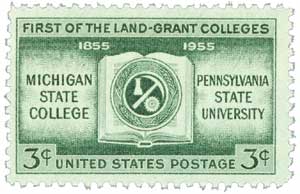
On July 2, 1862, the Morrill Act was signed into law, promoting a new direction for American education.
Born in Strafford, Vermont, Justin S. Morrill was a powerful US political leader. He served Vermont as a congressman from 1855-67 and as a senator from 1867-98. Morrill introduced the Morrill Tariff Act of 1861, and was key to the formation of the Republican Party and in passing the legislation that formed the Library of Congress.
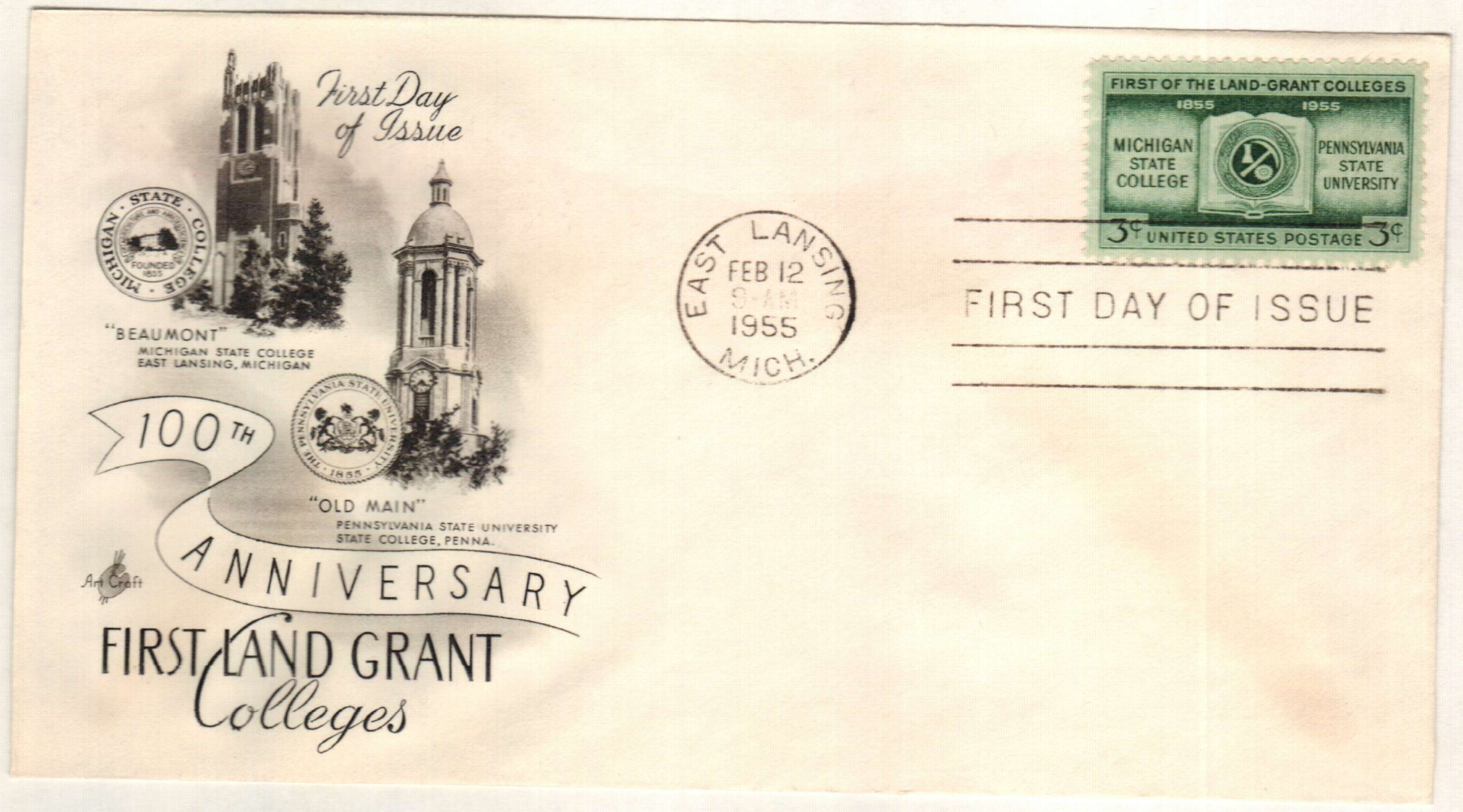
Morrill is best remembered for the Morrill Act of 1862, which established land-grant colleges and universities. The idea was based on the first land-grant institutions established on the state level in February 1855. The Agricultural College of the State of Michigan was granted 14,000 acres of state land on February 12. Ten days later, the Farmer’s High School of Pennsylvania was re-established as the Pennsylvania State University. Together, they served as the model for the Morrill Act of 1862.
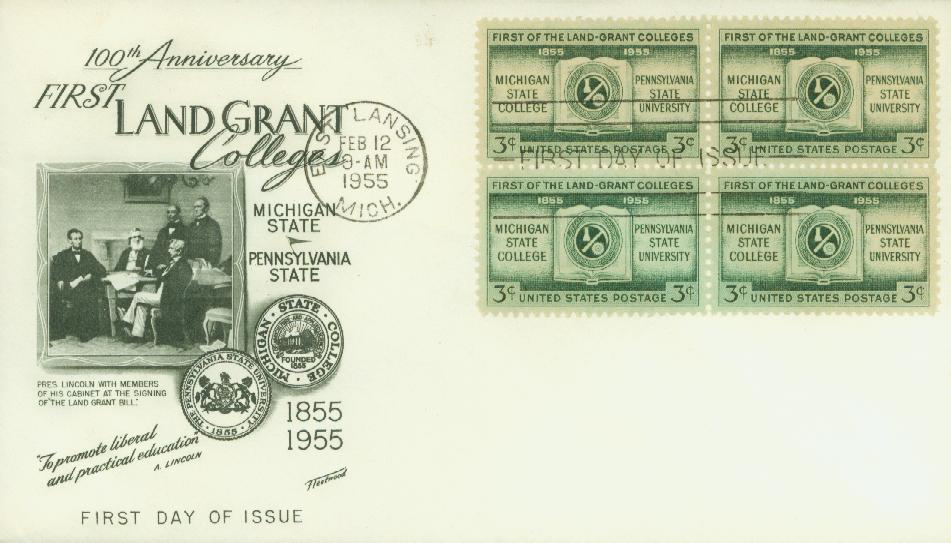
Morrill introduced his first land-grant bill to Congress in 1857. Its purpose was to offer a course of study that wasn’t based on either abstract liberal arts or on military science, which were the primary focuses of higher education during the 1800s.
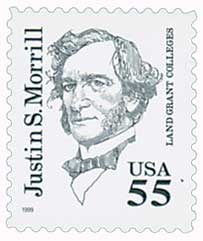
According to Morrill, “This bill proposes to establish at least one college in every State upon a sure and perpetual foundation, accessible to all, but especially to the sons of toil, where all of needful science for the practical avocations of life shall be taught, where neither the higher graces of classical studies nor that military drill our country now so greatly appreciates will be entirely ignored, and where agriculture, the foundation of all present and future prosperity, may look for troops of earnest friends, studying its familiar and recondite economies, and at last elevating it to that higher level where it may fearlessly invoke comparison with the most advanced standards of the world.”
Morrill’s bill was passed in 1859 but vetoed by President Buchanan (who also vetoed the Homestead Act). Morrill resubmitted the bill in 1861 when it was passed. On July 2, 1862, President Abraham Lincoln signed the Morrill Act into law. The first “land-grant college” created under the act was Kansas State University – established February 16, 1863.
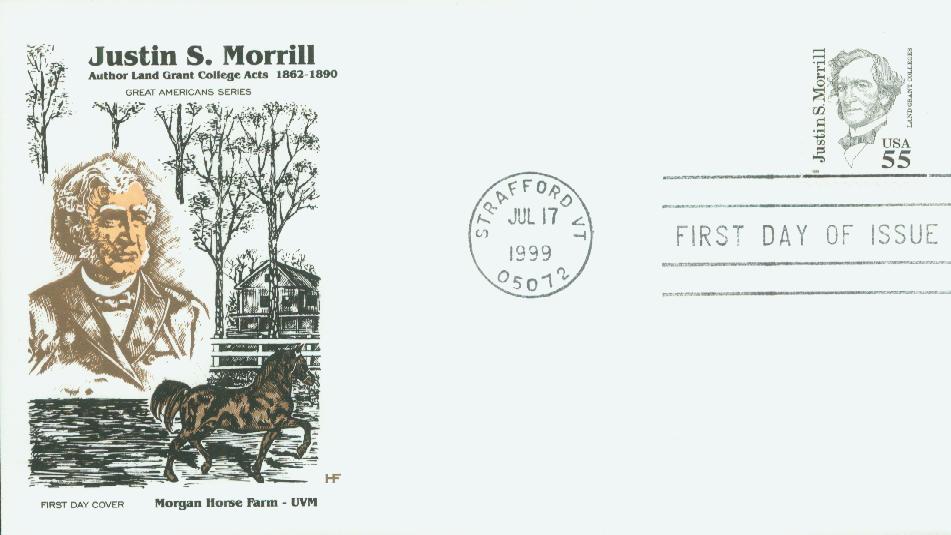
The act gave each state 30,000 acres of Federal land for each of its senators and congressmen. The states had the option of developing the property or selling it to raise funds to establish “land-grant” colleges. Land grant colleges, which featured courses on practical agriculture, science, and engineering, were a response to the industrial revolution. States that had seceded from the Union were not eligible to take advantage of the Morrill Act.
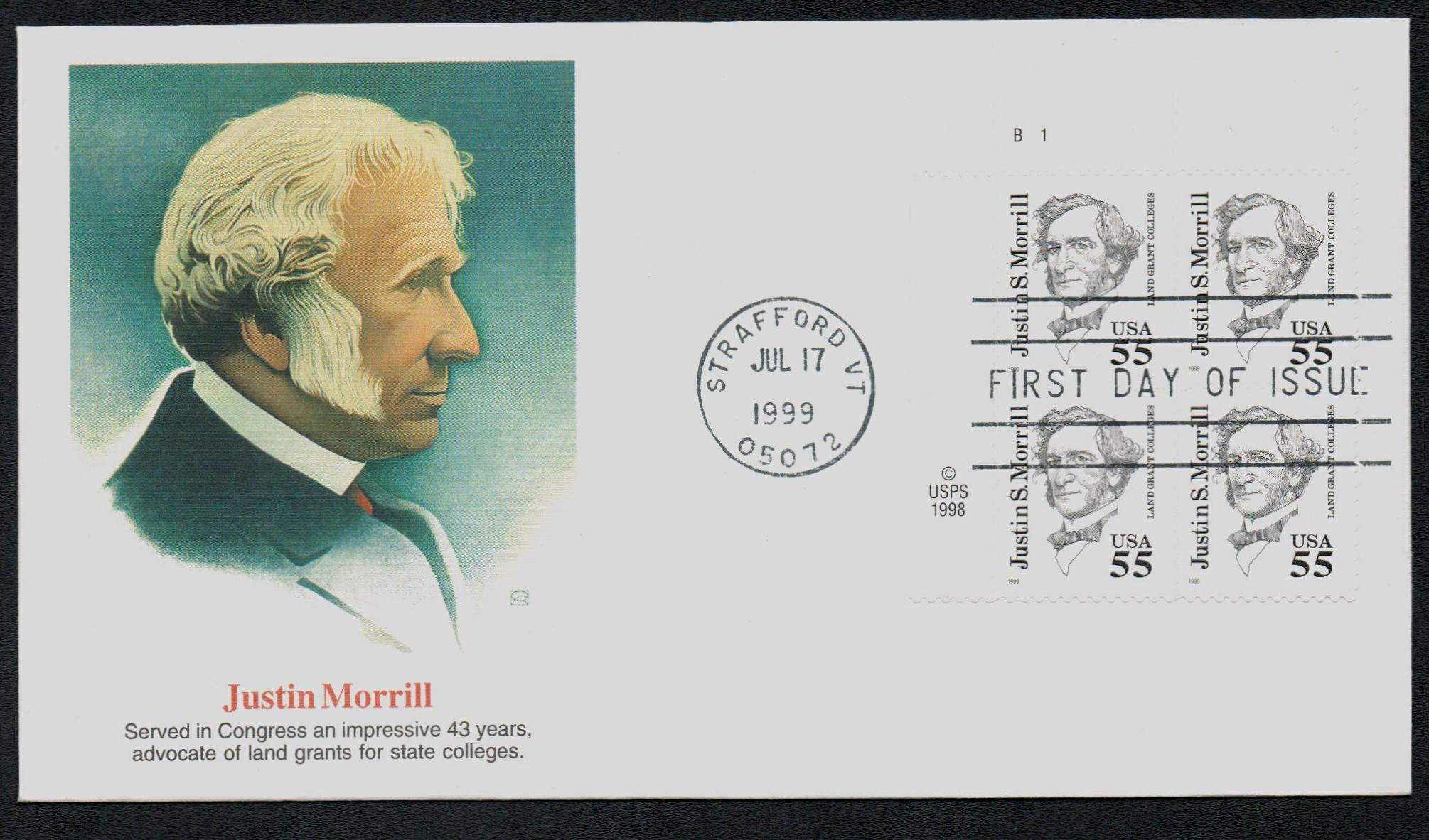
The act also added military science and tactics to these studies. Thirty states used the money to start new agricultural and mechanical colleges. Eighteen states gave the money to existing state universities to form agricultural and mechanical departments. Three states gave the money to private universities. The University of California and University of Illinois are two of the best-known land-grant colleges.
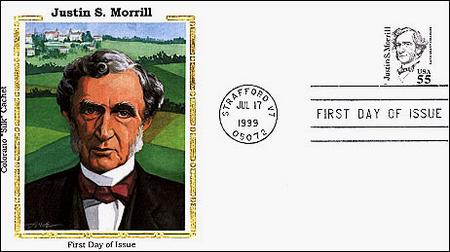
A second Morrill Act was passed in 1890. Aimed at the Southern states, the act required each state to show that race wasn’t a consideration for admission, or to establish a separate land-grant college for African Americans. Over 100 years later, land grant colleges for Native Americans were introduced. More recently, the concept has been developed to fund universities for aquatic, urban, space, and sustainable energy research.
1955 3¢ First Land Grant Colleges
City: East Lansing, Michigan
Quantity: 120,484,800
Printed by: Bureau of Engraving and Printing
Printing Method: Rotary Press
Perforations: 11 x 10 ½
Color: Green
First Land Grant Colleges
The Morrill Act

On July 2, 1862, the Morrill Act was signed into law, promoting a new direction for American education.
Born in Strafford, Vermont, Justin S. Morrill was a powerful US political leader. He served Vermont as a congressman from 1855-67 and as a senator from 1867-98. Morrill introduced the Morrill Tariff Act of 1861, and was key to the formation of the Republican Party and in passing the legislation that formed the Library of Congress.

Morrill is best remembered for the Morrill Act of 1862, which established land-grant colleges and universities. The idea was based on the first land-grant institutions established on the state level in February 1855. The Agricultural College of the State of Michigan was granted 14,000 acres of state land on February 12. Ten days later, the Farmer’s High School of Pennsylvania was re-established as the Pennsylvania State University. Together, they served as the model for the Morrill Act of 1862.

Morrill introduced his first land-grant bill to Congress in 1857. Its purpose was to offer a course of study that wasn’t based on either abstract liberal arts or on military science, which were the primary focuses of higher education during the 1800s.

According to Morrill, “This bill proposes to establish at least one college in every State upon a sure and perpetual foundation, accessible to all, but especially to the sons of toil, where all of needful science for the practical avocations of life shall be taught, where neither the higher graces of classical studies nor that military drill our country now so greatly appreciates will be entirely ignored, and where agriculture, the foundation of all present and future prosperity, may look for troops of earnest friends, studying its familiar and recondite economies, and at last elevating it to that higher level where it may fearlessly invoke comparison with the most advanced standards of the world.”
Morrill’s bill was passed in 1859 but vetoed by President Buchanan (who also vetoed the Homestead Act). Morrill resubmitted the bill in 1861 when it was passed. On July 2, 1862, President Abraham Lincoln signed the Morrill Act into law. The first “land-grant college” created under the act was Kansas State University – established February 16, 1863.

The act gave each state 30,000 acres of Federal land for each of its senators and congressmen. The states had the option of developing the property or selling it to raise funds to establish “land-grant” colleges. Land grant colleges, which featured courses on practical agriculture, science, and engineering, were a response to the industrial revolution. States that had seceded from the Union were not eligible to take advantage of the Morrill Act.

The act also added military science and tactics to these studies. Thirty states used the money to start new agricultural and mechanical colleges. Eighteen states gave the money to existing state universities to form agricultural and mechanical departments. Three states gave the money to private universities. The University of California and University of Illinois are two of the best-known land-grant colleges.

A second Morrill Act was passed in 1890. Aimed at the Southern states, the act required each state to show that race wasn’t a consideration for admission, or to establish a separate land-grant college for African Americans. Over 100 years later, land grant colleges for Native Americans were introduced. More recently, the concept has been developed to fund universities for aquatic, urban, space, and sustainable energy research.









